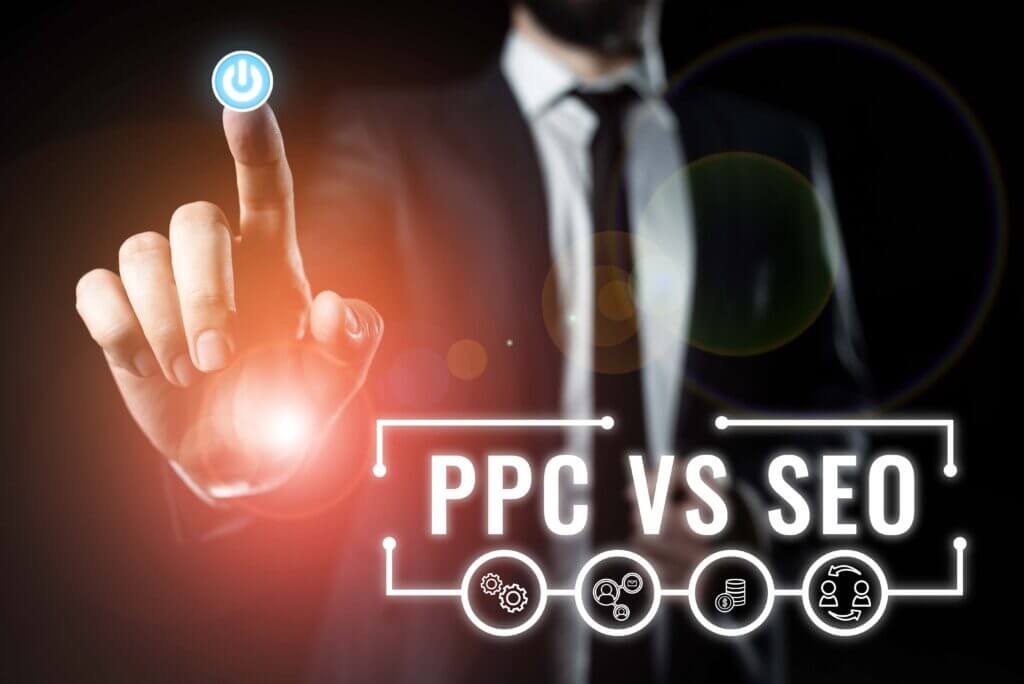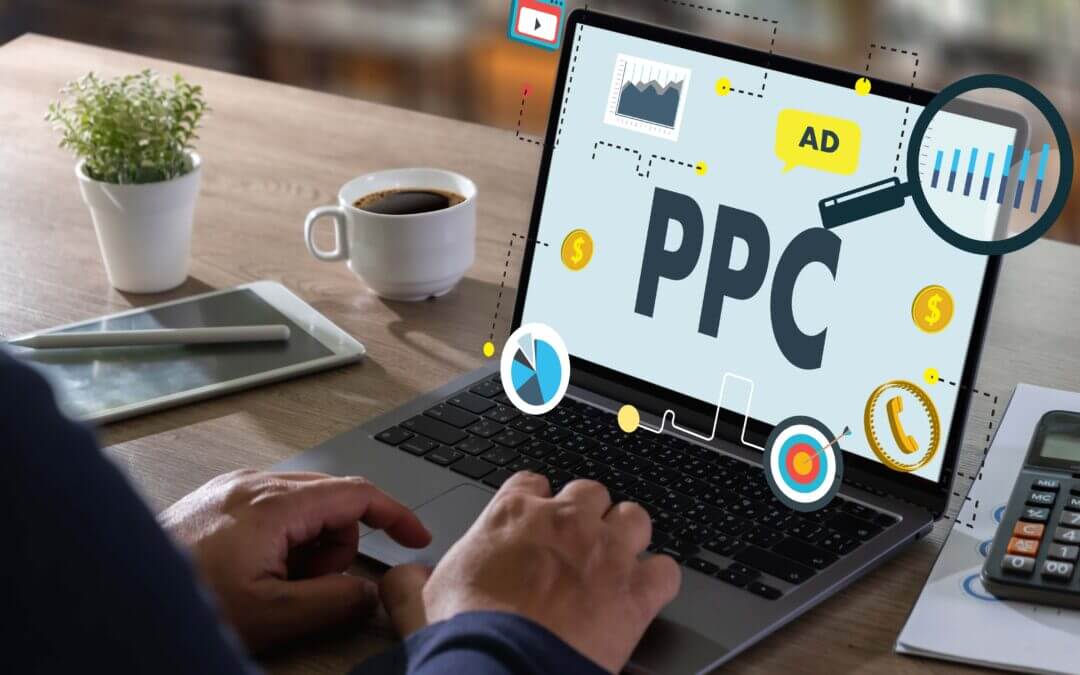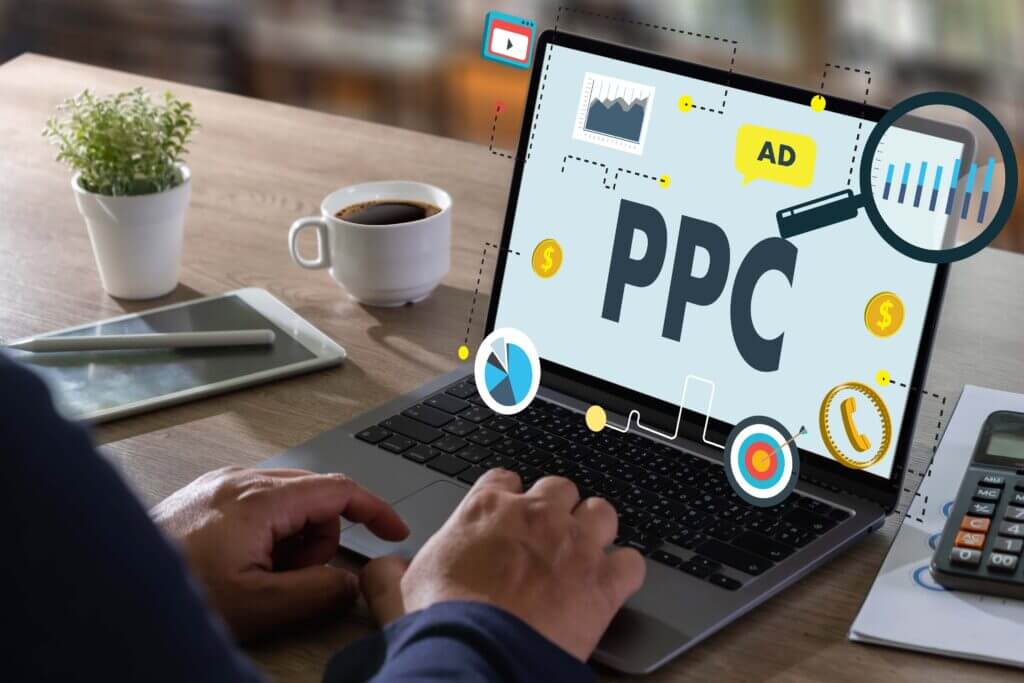Imagine you’ve just boosted your conversion rate by 30% after refining your keyword strategy using Google Ads. That’s the kind of success ‘Mastering Google Ads: Strategies and Techniques for PPC Specialists‘ can help you achieve.
You’ll learn to navigate the complexities of PPC campaigns with ease, from setting measurable goals to optimizing your bids. This guide teaches you how to craft ad copy that speaks to your audience’s needs and tweak your targeting to reach the right people at the right time.
You’ll master the art of using data to drive decisions, ensuring every dollar you spend is an investment in your business’s growth. Whether you’re a seasoned specialist or new to the PPC world, this book is your roadmap to becoming a Google Ads expert.
Understanding Google Ads Dynamics
You need to grasp the ever-changing landscape of Google Ads to stay ahead of the curve.
Start by assessing the structure and settings of your ad campaigns to ensure they’re aligned with your marketing objectives.
Recognize that each tweak you make can have a significant impact on your ads’ performance and your overall return on investment.
Ad Campaigns
To truly excel in your ad campaigns, it’s essential that you grasp the dynamism of Google Ads. This involves understanding its complex auction system, how ad relevance affects quality score, and the ways in which click-through rates influence ad positioning.
Your PPC campaign success hinges on how well you manage ad groups, select the right targeting options, and apply effective bidding strategies. Crafting a campaign isn’t just about setting it and forgetting it; you must continuously refine your approach.
This means analyzing performance data, experimenting with different ad formats, and adjusting your bids to align with your campaign goals. Master these components, and you’ll be well on your way to optimizing your ad campaigns for maximum impact and efficiency.
Crafting Compelling Ad Copy
Crafting engaging ad copy is one of the most critical steps in maximizing the impact of your Google Ads campaigns. You need to communicate your value proposition clearly and compellingly to stand out in the crowded digital marketplace. Here’s how you can create effective ads that resonate with your target audience:
- Highlight the Unique Selling Points (USPs): Your ad copy should quickly and clearly convey what sets your product or service apart from competitors.
- Emphasize Benefits, Not Just Features: Tell potential customers how your product or service will improve their lives, not just what it does.
- Incorporate a Strong Call to Action (CTA): Guide users on what to do next – whether that’s to ‘Buy Now’, ‘Learn More’, or ‘Sign Up Today’.
- Match Ad Copy to Landing Pages: Ensure your ad copy aligns with the messaging on your landing pages for a cohesive user experience.
- Use Keywords Strategically: Integrate relevant keywords naturally to aid machine understanding and improve ad relevance.
When you’re creating effective ad copy, it’s not just about what you say; it’s also about how you say it. Keep it concise, focused, and persuasive. Your call to action should be clear, urging users to take the next step towards becoming customers. Make sure that when they click through, they land on a page that delivers on the promise of your ad, with content that reinforces their decision to engage.
Leveraging Audience Targeting Strategies
You’ve crafted your ad copy, now it’s time to ensure it reaches the right eyes.
By using demographic targeting, you can pinpoint your ads to specific age groups, genders, and income levels, making your campaign more relevant.
Interest targeting allows you to tap into the preferences and behaviors of your audience, connecting your message with those most likely to engage.
Demographic Targeting
As a PPC specialist, you can hone your campaign’s effectiveness by meticulously targeting demographics that align with your brand’s audience personas. Demographic targeting allows you to refine your Google Ads campaign to reach the individuals most likely to engage with your brand, boosting your campaign performance.
Here’s how you can leverage audience targeting strategies in your demographic targeting:
- Identify Age Groups: Target ads to the age range that most closely matches your target audience.
- Gender Targeting: Focus on the gender that predominantly uses your product or service.
- Geographical Location: Tailor your ads to users in specific locations where your audience resides.
- Income Level: Adjust bids for audience segments with different income levels.
- Parental Status: Use this to connect with parents or non-parents, depending on your product.
Interest Targeting
Build on your demographic targeting efforts by integrating interest targeting to connect with users based on their passions, habits, and activities. When you hone in on interests, your Google Ads become more relevant, engaging users who are more likely to respond to your marketing message. This approach can elevate your PPC campaign’s performance significantly.
Here’s a snapshot of how to leverage interest targeting:
| Strategy | Benefit |
| In-depth Analysis | Identifies nuanced interests |
| Smart Bidding | Optimizes bids for targeted interests |
| Ad Customization | Aligns ads with user interests |
| Landing Pages | Tailors content to interests for better engagement |
Optimizing Landing Pages for Conversions
While creating compelling Google Ads is crucial, your campaign’s success hinges on optimizing landing pages to effectively convert visitors into customers. If your landing pages aren’t primed for conversion, you’ll likely see a lot of website traffic but few actionable results. To ensure you’re optimizing landing pages for conversions and getting the most out of your successful Google Ads campaigns, consider these key strategies:
- Align Content and Design: Your landing pages should reflect the promise made in your Google Ads. Ensure that the messaging is consistent, and the design is appealing.
- Speed is Key: A slow-loading page can kill conversions. Make sure your landing pages load quickly to keep potential customers engaged.
- Use Clear Calls-to-Action: Don’t leave visitors guessing. Use direct and compelling calls-to-action (CTAs) to guide them towards the desired action.
- Implement Conversion Tracking: To understand what works, use conversion tracking tools to gather data on user behavior and tweak your pages accordingly.
- Test and Optimize: Continuously test different elements of your landing page—from headlines to images—and optimize based on performance data.
Maximizing Ad Extensions for Impact
You can significantly enhance your Google Ads’ visibility and performance by skillfully using ad extensions. These powerful features allow you to provide additional information and interactive elements that can make your ads more appealing and informative to potential customers. By incorporating ad extensions into your Google Ads campaigns, you’re giving your ads the extra edge they need to stand out in a crowded online marketplace.
Ad extensions come in various forms, including call buttons, location information, additional links, and even structured snippets that highlight specific aspects of your products or services. The key to maximizing their impact is to select the extensions that align closely with your campaign goals and target audience. For instance, if you’re a local business, using location extensions can drive foot traffic, while call extensions may be more beneficial for service-oriented companies that rely on phone queries.
When it comes to bidding, both manual and automatic bidding strategies can be adjusted to account for the added value of ad extensions. While manual bidding gives you direct control over your bid adjustments, automatic bidding algorithms can optimize your bids to improve the chances that your extensions will show.
Implementing Conversion Tracking
To effectively gauge your campaign’s success, you’ll need to implement conversion tracking within your Google Ads strategy. Conversion tracking is the compass that guides your PPC ads towards true north—understanding which ads convert leads into customers. Without it, you’re navigating blind, unable to measure the impact of your efforts or the true ROI of your ad spend.
Here’s how you can set up conversion tracking to ensure an effective campaign:
- Install the Conversion Tracking Tag: Place the Google Ads conversion tracking tag on your website. This tag will record when someone who clicked your ad takes a valuable action on your site.
- Define Your Conversion Actions: Identify what constitutes a conversion for your business—be it a product purchase, a sign-up form completion, a download, or a call to your business.
- Link to Google Analytics: For even more detailed insights, link your conversion tracking with Google Analytics. This will allow you to track the customer journey and understand which ads lead to conversions.
- Set Conversion Values: Assign values to your conversion actions to measure their worth and understand which leads are most valuable.
- Analyze and Optimize: Use the data collected from conversion tracking to analyze the performance of your keywords and ads. This information lets you refine your campaigns for better results.
Harnessing the Power of Automation
Building on your conversion tracking setup, let’s explore how automation can further optimize your Google Ads campaigns for efficiency and effectiveness. Automation isn’t just a buzzword; it’s a game-changer that can take your pay-per-click (PPC) advertising campaign to new heights. By harnessing the power of automated bidding, you can ensure that your ads are always in the right place at the right time, without constantly micromanaging bids.
Automated bidding relieves you of the stress of setting and adjusting maximum bids for each ad group or keyword. Instead, Google’s algorithms analyze a plethora of signals in real-time, adjusting your bids to maximize the potential for conversions. It’s like having a digital expert tirelessly fine-tuning your campaigns for optimal performance, freeing you up to focus on strategic decisions and search engine optimization.
But what does this mean for you emotionally? Below is a table that contrasts the feelings you might experience with and without automation:
| Without Automation | With Automation |
| Overwhelmed by data | Empowered by efficiency |
| Frustrated with bids | Relieved by precision |
| Anxious about results | Confident in performance |
Embrace the sophistication of Google Ads automation and watch as the frustration of manual bid management fades into relief and precision. Let anxiety over campaign results be replaced by confidence, knowing that your advertising campaign is optimized for the best possible outcomes. Automation isn’t just smart; it’s a strategic partner that empowers you to shine in the world of digital marketing.

Conducting A/B Testing for Optimization
Consistently refining your Google Ads campaigns, A/B testing serves as a crucial tool to elevate your advertising efficacy by comparing different ad elements directly. By conducting keyword comparisons and testing ad copy variations, you can uncover insights that lead to more successful PPC outcomes. Remember, the smallest changes can sometimes yield the most significant improvements.
To help you harness the power of A/B testing, consider these advanced strategies:
- Identify Variables: Decide which elements of your ads you want to test. This could be anything from headlines and descriptions to display paths and call-to-action buttons.
- Set Clear Objectives: Determine what you want to achieve with each test. Whether it’s a higher click-through rate, increased conversions, or improved quality score, having a clear goal is essential.
- Create Controlled Experiments: When you conduct A/B tests, change only one element at a time to accurately measure its impact.
- Analyze Results: Use Google Ads’ built-in tools to evaluate the performance of each variant. Look for statistically significant differences to inform your decisions.
- Implement Findings: Apply the insights gained from your A/B tests to optimize your campaigns. This might involve tweaking ad copy, adjusting bids, or even restructuring your ad groups.
As you refine your approach, don’t forget to create a remarketing list based on the data you collect. This allows you to tailor your ads to users who’ve already shown interest in your products or services. By combining A/B testing with other digital marketing techniques, you’ll develop a more comprehensive and effective online advertising strategy.
Staying Ahead with Competitive Analysis
Amid your A/B testing efforts, it’s crucial you also keep a watchful eye on your competitors’ campaigns to ensure you’re not falling behind in the ever-evolving PPC landscape. Mastering Google Ads isn’t just about optimizing your own campaigns, but also about understanding and even anticipating your rivals’ moves. That’s where competitive analysis comes into play.
As a PPC specialist, you have a wealth of strategies at your disposal to dissect and analyze what others in your industry are doing. By conducting a thorough competitive analysis, you can uncover the keywords they’re targeting, the ad copy they’re using, and the offers they’re promoting. This intel can fuel your own campaign decisions and help you carve out a more dominant position in the market.
To make this process more digestible, let’s break down the key components of competitive analysis into a simple table:
| Aspect | Why It’s Important | Actionable Strategy |
| Keywords | Understanding the terms your competitors are bidding on can reveal market trends and gaps. | Use tools like Google’s Auction Insights to identify these keywords and adjust your strategy. |
| Ad Copy | Analyzing competitors’ ad copy helps you gauge the messaging that resonates with your shared audience. | Craft more compelling ads that differentiate your value proposition. |
| Landing Pages | Competitors’ landing pages can provide insights into their conversion tactics and user experience. | Benchmark against these pages and implement improvements to your own site. |
Competitive analysis isn’t a one-off task—it’s an ongoing process that keeps you at the forefront of PPC innovation. By mastering these approaches, you’ll not only stay competitive, but you might also set new standards for others to follow.
Scaling Campaigns for Growth
To effectively scale your Google Ads campaigns for growth, you’ll need to refine your bidding strategies and expand your keyword targeting to capture a wider audience. As a PPC specialist, it’s essential to leverage the tools and features you can create through Google Ads to maximize the potential for businesses of all sizes.
Here are some key steps to consider:
- Implement Smart Bidding: Use machine learning algorithms to optimize bids in real-time, focusing on conversions that add the most value to your business.
- Expand Keyword Lists: Regularly research and add relevant keywords to ensure you’re capturing all potential search queries.
- Use Ad Extensions: Enhance your ads with additional information, such as site links, callouts, or structured snippets, to improve visibility and click-through rates.
- Optimize for Mobile: Ensure your ads and landing pages are mobile-friendly, as a significant portion of Google searches occur on mobile devices.
- Test and Refine Ad Copy: Continuously A/B test different headlines and descriptions to determine what resonates best with your target audience.

Relationship between PPC and SEO
PPC (Pay-Per-Click) and SEO (Search Engine Optimization) are two distinct digital marketing strategies that aim to increase visibility and drive traffic to a website. While they are different approaches, they can complement each other and work together to achieve overarching marketing goals.
Frequently Asked Questions
How Do I Learn Google PPC Ads?
To learn Google PPC ads, start by setting up an account on the Google Ads website. Define your campaign goals and dive into keyword research to shape your strategy.
Experiment with A/B testing on your ads, closely analyze keyword performance, and optimize accordingly. Elevate your ads with high-quality visuals and consider adding chatbots to your site to improve customer interaction.
Stay informed on the latest trends to keep your campaigns competitive.
How Do I Become a Good Google Ad Specialist?
To become a good Google Ad specialist, you need to dive deep into campaign structures, understand keyword research, and master ad copywriting.
It’s essential to learn targeting techniques, budget management, and analytics interpretation. Stay updated on Google’s platform changes and industry best practices.
Practice makes perfect; so set up your campaigns, test different strategies, analyze the results, and keep refining your approach. Networking with other professionals and ongoing learning will also boost your expertise.
How Do I Optimize Google PPC Ads?
To optimize your Google PPC ads, you’ll want to:
- Refine your keywords.
- Ensure your ad copy resonates with your target audience.
- Use ad extensions to enhance visibility.
Keep an eye on your bids and adjust them based on performance data. Don’t forget to set up conversion tracking to measure success and inform your strategy.
What Is the Best Strategy for Running Effective PPC Campaigns?
To run effective PPC campaigns, you’ll need to start by identifying your target audience and setting clear goals. Create compelling ad copy and use strong call-to-actions.
Always include relevant keywords and optimize for them. Don’t forget to test different ad variations and analyze the results to see what’s working.
Adjust your bids and budgets based on performance, and remember, continuous optimization is key to maximizing your return on investment.
Conclusion
You’ve now unlocked the secrets of Google Ads. With compelling ad copy, sharp targeting, and optimized landing pages, you’re set to captivate your audience.
Don’t forget to amplify reach with ad extensions and harness automation’s might. Keep testing and analyzing to outshine competitors.
Ready to scale? Your campaigns are poised for unprecedented growth. Embrace these strategies with us here at Online Biz Builders, expert in SEO, Google Ads PPC and Web Design – a good combination to boost your business’ conversion and reach, let’s together soar, and help your digital marketing campaigns flourish. The PPC world is ours to master.










